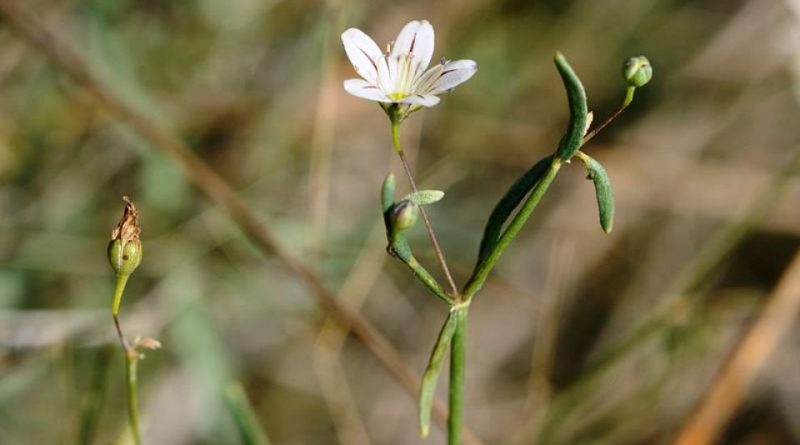Gypsophila capillaris
Gypsophila capillaris
The Desert Baby’s Breath (Gypsophila capillaris (Forssk.) C. Chr.) is a herbaceous species belonging to the Caryophyllaceae family.
Systematics –
From a systematic point of view it belongs to:
Eukaryota Domain,
Kingdom Plantae,
Subarign Tracheobionta,
Magnoliophyta Division,
Magnoliopsida class,
Subclass Caryophyllidae,
Order Caryophyllales,
Caryophyllaceae family,
Genus Gypsophila,
G. capillaris species.
The terms are synonymous:
– Gypsophila arabica Barkoudah;
– Rokejeka capillaris Forssk .;
– Gypsophila rokejeka Del ..
Two subspecies have been recognized within this species:
– Gypsophila capillaris subsp. capillaris;
– Gypsophila capillaris subsp. confused Zmarzty.
Etymology –
The term Gypsophila comes from the Greek γύψος gýpsos chalk and from φίλος phílos friend, lover: due to the habitat consisting of calcareous substrates.
The specific epithet capillaris comes from capillary, with organs as thin as hair.
Geographic Distribution and Habitat –
Gypsophila capillaris is a species found in some parts of the Arabian peninsula, Iran and in some areas of the Nile delta.
Its habitat is that of desert areas, shrub steppes, Mediterranean woods and shrubs, semi-steppe shrubs, shrub steppes, deserts and extreme deserts.
Description –
Gypsophila capillaris is a perennial herbaceous species, with woody stems.
The leaves are fleshy with opposite gray-green color.
The flowers are collected in loose panicles inflorescences.
The flowers consist of capillary pedicels, up to 33 mm; the calyx is campanulate-obconic, 2-3 mm; the petals are white with lilac to purple veins, oblong-elliptical.
The flowering period is from April until November.
The fruits are pods, with a capsule, globose that usually contains 2 or more seeds, from smooth to tuberculous.
Cultivation –
Gypsophila capillaris is a plant that grows spontaneously in a typically desert area or shrub steppes, Mediterranean woods and shrubs, semi-steppe shrubs, shrub steppes.
This species prefers chalky soils.
This species can be harvested in the natural state for medicinal purposes.
Customs and Traditions –
Gypsophila capillaris belongs to a genus where some plants contain saponins in the root. Even if no in-depth studies have been done on this species, it is possible that it contains them. They are certainly contained in the root in the form of triterpene saponins which have spermicidal activity.
Although poisonous, saponins also have a number of medicinal applications and many saponin-rich plants are used in herbal medicine (particularly as emetics, expectorants and febrifuges) or as sources of raw materials for the pharmaceutical industry.
Saponins have a rather bitter taste and are generally poorly absorbed by the human body, so most pass through without damage. Saponins are much more toxic to many cold-blooded creatures, such as fish, and hunter tribes have traditionally placed large quantities of them in streams, lakes, etc.
Preparation Method –
Gypsophila pani culata is of no particular importance for food use, while the root can be used for medicinal purposes.
Guido Bissanti
Sources
– Acta Plantarum – Flora of the Italian Regions.
– Wikipedia, the free encyclopedia.
– Useful Tropical Plants Database.
– Conti F., Abbate G., Alessandrini A., Blasi C. (ed.), 2005. An annotated checklist of the Italian vascular flora, Palombi Editore.
– Pignatti S., 1982. Flora of Italy, Edagricole, Bologna.
– Treben M., 2000. Health from the Lord’s Pharmacy, Advice and experiences with medicinal herbs, Ennsthaler Editore.
Warning: Pharmaceutical applications and alimurgical uses are indicated for informational purposes only, they do not represent in any way a medical prescription; therefore no responsibility is taken for their use for curative, aesthetic or food purposes.


